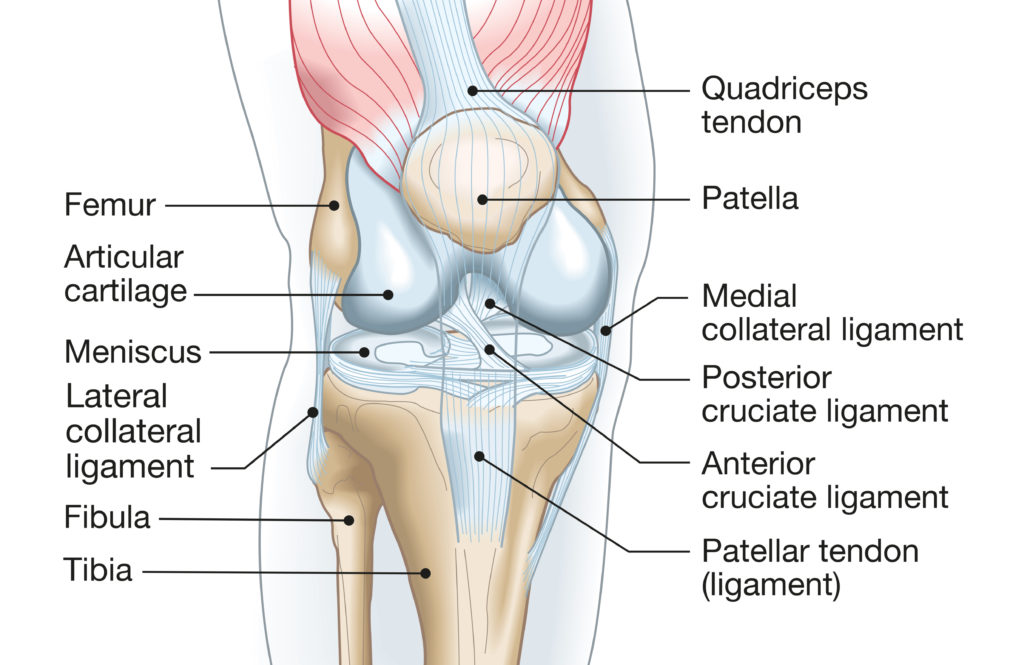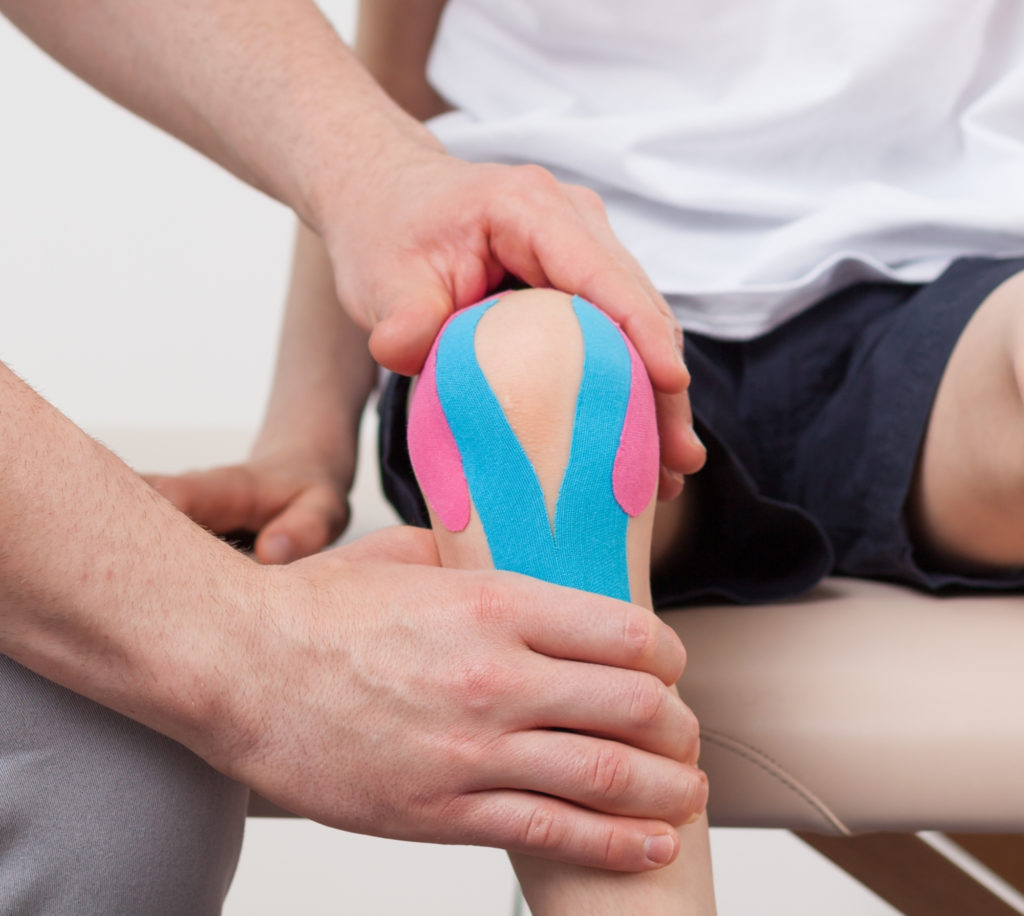Anatomy
The knee is composed of two joints: tibiofemoral joint and patellofemoral joint. The tibiofemoral joint is between the femur (thigh bone) and tibia (shin bone). The patellofemoral joint is between the patella (knee cap) and femur.
The knee provides stability and shock absorption for the lower extremities during activities like squatting and walking. This is achieved through tissues like the meniscus within the joint space. Additional structures that support the knee joint are ligaments (ACL, PCL, MCL, LCL), joint capsule, and muscles (quadriceps, hamstrings).
The primary actions of the knee joint are flexion and extension. These motions are enhanced by movement of the patella in the groove of the femur. The analogy that’s often used to demonstrate this relationship is the train (patella) on the train tracks (groove of femur). Strength and flexibility imbalances can affect how the train track is positioned for the train making it either straight or crooked.

Common Causes Of Knee Pain
There are a number of ways you can get knee pain. To keep it simple it can either be from a traumatic injury like falling or a non-traumatic injury such as having pain with certain movements. If it’s from a non-traumatic injury, then it could be an acute or chronic overuse injury. The severity of your symptoms will vary depending on the tissues affected and your movement patterns – how you squat, walk, and navigate stairs.
Other causes of knee pain include:
- Patellofemoral pain syndrome
- Patellar dislocation
- Plica syndrome
- Tendinitis
- Bursitis
- Meniscus tears
- Ligament sprains or tears
- Muscle strains or tears
- Fractures
- And more
Common symptoms include:
- Clicking/popping
- Swelling or stiffness
- Pain (aching, sharp, dull)
- Difficulty straightening knee
- Feeling as though your knee is stuck when trying to move it
- Feeling like your knee is giving away
How Physical Therapy Helps You
Knee pain can be caused by a myriad of issues whether it’s local (within the knee), referred pain from a muscle, or radiating from the spine. A physical therapist can evaluate you to determine the cause of your symptoms to help manage pain, improve mobility, and restore strength.
Following the initial evaluation, your physical therapist will determine and discuss the cause of your pain or issues. Together, you and your physical therapist will set goals specific to your needs and create a plan of care. Your plan of care will help you accomplish your goals and get you back to what you enjoy doing!
Living with pain does not have to be your new norm. Contact us to get a free phone consult and schedule an initial appointment if you’re suffering from knee pain.

480.269.1668